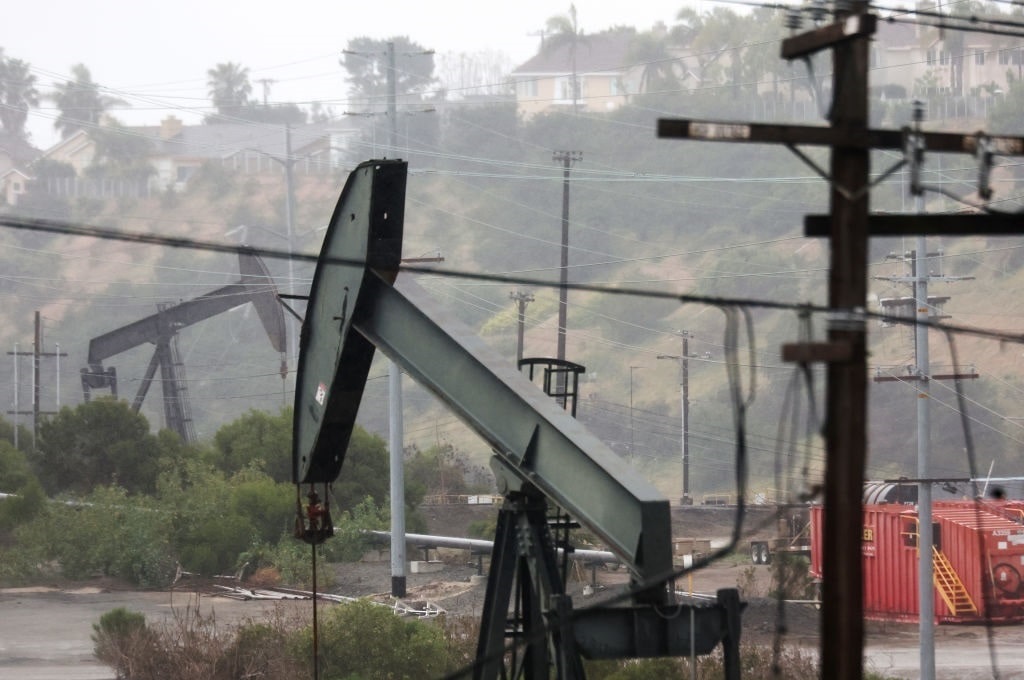Expectations of peak oil have been around since the dawn of the 20th century. Every ten years or so, some expert will make a dire prediction that the world is running out of crude oil, creating a doom-and-gloom scenario. This was most pronounced heading into the 2000s, and then hydraulic fracturing (fracking) became prominent in the US oil and gas industry and eviscerated these forecasts. By 2019, the United States became “Saudi America” and transformed into an energy-independent powerhouse. But while the US is awash in black gold and Texas tea, the current administration, led by a green fixation, is looking to make peak oil a realization.
Joe Biden and Peak Oil
Aside from two weeks in August, US oil production has been flat this year, ranging between 12.2 and 12.4 million barrels per day (bpd), according to the Energy Information Administration (EIA). Domestic output remains below the pre-pandemic high of 13.1 million bpd recorded in March 2020. What’s worse is that since the summer of 2022, production levels have been below-trend, and this could persist based on the number of active drilling rigs in the country.
The Baker Hughes Oil Rig Count came in at 525 for the week ending Aug. 11, the lowest reading since March 2022. Since reaching a peak of above 620 in late 2022, the widely watched gauge of crude oil rigs has been on a downward trend. Moreover, the measurement had failed to reach pre-crisis levels, even with prices much higher than they were heading into the COVID-19 public health crisis.
It does not end there. A recent report from Enverus Intelligence Research has found that the sharp decline in domestic production from US shale wells is worse than the industry expected. This is forcing companies to bolster their workload to prevent output from slowing and develop new strategies to maximize already expensive drilling opportunities due to federal and state red tape.
“The U.S. shale industry has been massively successful, roughly doubling the production out of the average oil well over the last decade, but that trend has slowed in recent years,” said Dane Gregoris, report author and managing director at EIR, in a statement. “In addition, we’ve observed that declines curves, meaning the rate at which production falls over time, are getting steeper as well density increases. Summed up, the industry’s treadmill is speeding up and this will make production growth more difficult than it was in the past.”
Looking ahead to the fall, the EIA appears to agree with some of the latest forecasts. The federal agency noted that oil and natural gas production volumes from US shale-producing regions are poised to decline in September and slump to the lowest levels since May.

(Photo by Mario Tama/Getty Images)
It turns out that interest rates are further weighing on the sector. The Federal Reserve and other central banks have increased the cost of capital and financing because of their quantitative tightening cycles, initiated due to their inflation-fueled stimulus and relief spending packages during the coronavirus pandemic. This makes everything more expensive for the oil and gas industry, from exploration and production investments to storing the energy commodity. If more US and global inventories are experiencing drawdowns, such a trend could result in higher prices in the future. And according to weekly EIA numbers, the world’s largest economy has witnessed substantial withdrawals from higher demand, totaling approximately 17 million barrels since March 2023.
Higher Prices Ahead?
The recent oil discovery in the Niger Delta proved the world is awash in bubblin’ crude. The US is also swimming in the stuff all over the country. But the establishment is trying to make outlandish peak oil predictions come true by not facilitating a healthy production environment.
Of course, by the government preventing more supply from coming to market through intense regulatory costs, consumers and businesses pay higher prices. West Texas Intermediate (WTI) has surged 12% over the last three months, trading above $80 a barrel on the New York Mercantile Exchange. Brent, the international benchmark for oil prices, has risen more than 11% since May to above $84 per barrel on London’s ICE Futures exchange. With oil accounting for about half of the cost of a gallon of gasoline, motorists are paying more at the pump this year. So far in 2023, the national average for a gallon of gas is up 20% and approaching $4. Perhaps the current regime in Washington will only be satisfied when the US outsources all of its energy needs overseas or depends on unreliable windmills that are killing whales.




